Last updated: October 26, 2025. Informational only – this is not legal or financial advice – Support Vector Machine (SVM)
Imagine drawing a line to separate cats from dogs in a photo collection. Easy, right? Now imagine doing this with thousands of subtle features. Height, fur texture, ear shape, and countless others. Where exactly should that line go? This is the problem Support Vector Machine solve brilliantly.
Support Vector Machines represent one of machine learning’s most elegant solutions. They find the optimal boundary between different categories. Moreover, they do this with mathematical precision. Unlike neural networks that can feel like black boxes, SVMs offer interpretable results. Additionally, they work remarkably well with limited data.
In the world of AI and machine learning, SVMs stand out. They’re powerful yet understandable. Furthermore, they’re practical for real-world applications. From text classification to image recognition, SVMs deliver reliable results. Let’s explore how they work and why they matter.
What are Support Vector Machine?
Support Vector Machines are supervised learning algorithms. They excel at classification tasks. In simple terms, they find the best boundary to separate different classes of data.
Think of it this way. You have two groups of points on a graph. SVMs find the widest possible “street” between these groups. The edges of this street touch the nearest points from each group. These critical points are called support vectors. Hence the name.
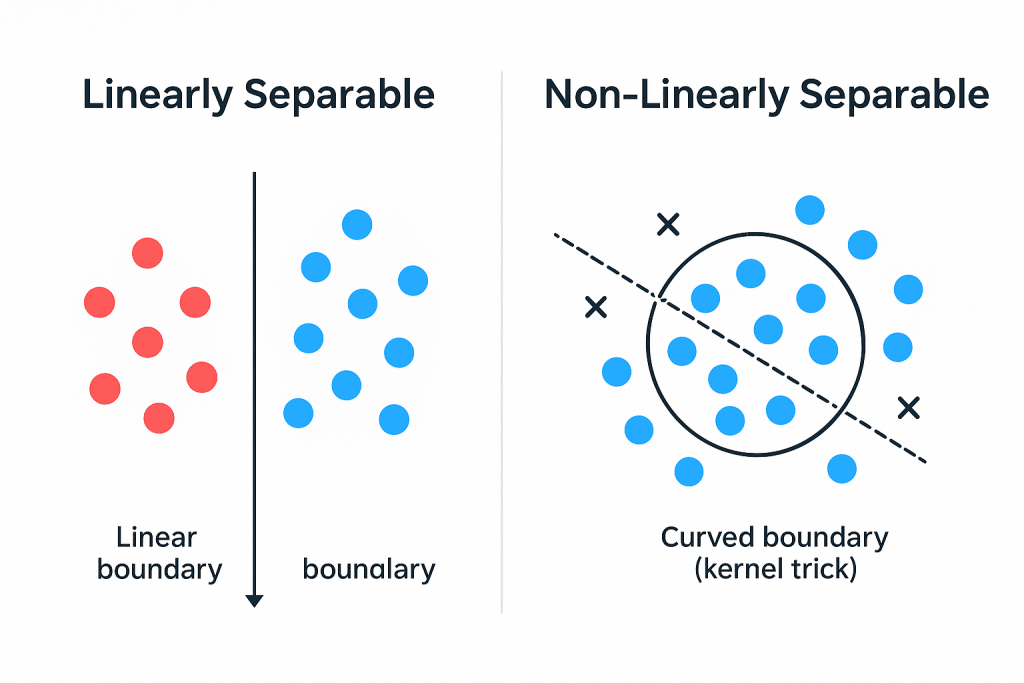
The Core Concept
The fundamental idea is straightforward. First, SVMs map data points in space. Then they find a hyperplane. This hyperplane separates different classes with maximum margin. The margin is the distance to the nearest data point from either side.
Why maximum margin? Because it creates the most robust boundary. Small variations in data won’t easily cross this boundary. Consequently, the classifier generalizes better to new, unseen data.
Linear vs Non-Linear Classification
SVMs handle both scenarios effectively. For linearly separable data, they draw a straight line. Actually, in higher dimensions, they create a hyperplane. This hyperplane perfectly divides the classes.
However, real-world data is often messy. Points from different classes mix together. They’re not linearly separable. This is where SVMs shine even brighter.
They use something called the kernel trick. This mathematical technique projects data into higher dimensions. In these higher dimensions, previously mixed data becomes separable. The SVM then finds the optimal hyperplane there. Finally, it maps this solution back to the original space.
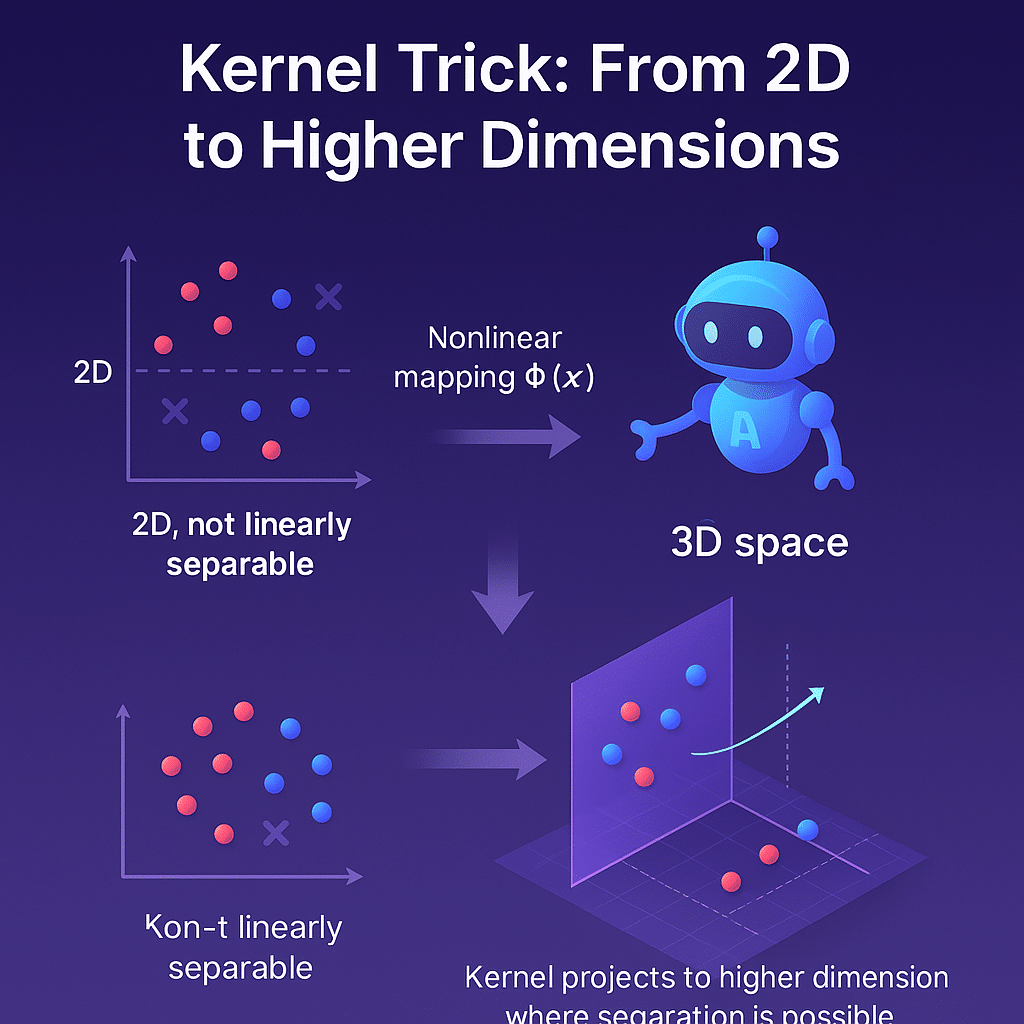
How to Apply SVMs in AI Development
Implementing SVMs requires understanding several key aspects. Let’s break down the practical application process.
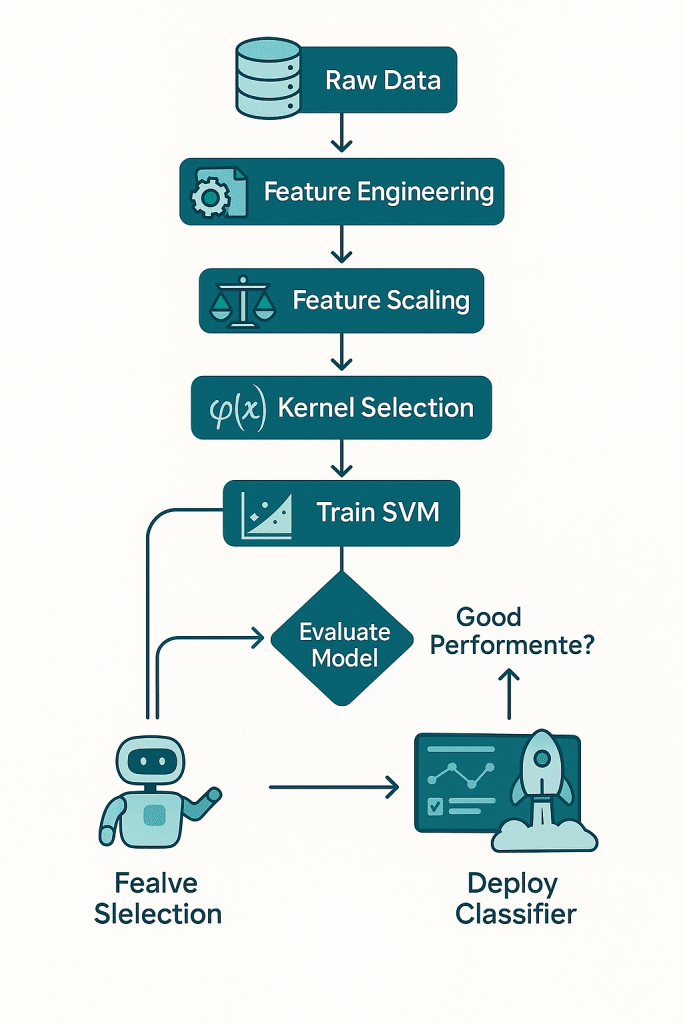
Choose the Right Kernel
This is your first critical decision. The kernel determines how your SVM handles data complexity.
The linear kernel works for linearly separable data. It’s fast and interpretable. Use it when your data is well-separated. Additionally, it’s perfect for text classification tasks. For instance, spam detection often works well with linear kernels.
The RBF (Radial Basis Function) kernel is more versatile. It handles non-linear patterns effectively. Moreover, it’s the default choice for many applications. The RBF kernel can model complex decision boundaries. However, it requires careful parameter tuning.
The polynomial kernel captures interactions between features. It works well for image processing tasks. Similarly, it’s useful when feature relationships matter. Nevertheless, it can be computationally expensive.
The sigmoid kernel behaves like a neural network. It’s less commonly used nowadays. Other kernels typically perform better. However, it has specific niche applications.
Feature Scaling is Critical
SVMs are distance-based algorithms. Therefore, feature scaling matters tremendously. Features on different scales can dominate the model. For example, imagine measuring height in centimeters and weight in tons. The weight would overwhelm the height measurement.
Always standardize your features. Subtract the mean. Then divide by standard deviation. Alternatively, use min-max scaling. This transforms all features to the same range. Typically, this range is [0, 1] or [-1, 1].
Without proper scaling, your SVM will underperform. Moreover, convergence takes much longer. Some features might be completely ignored. Don’t skip this crucial preprocessing step.
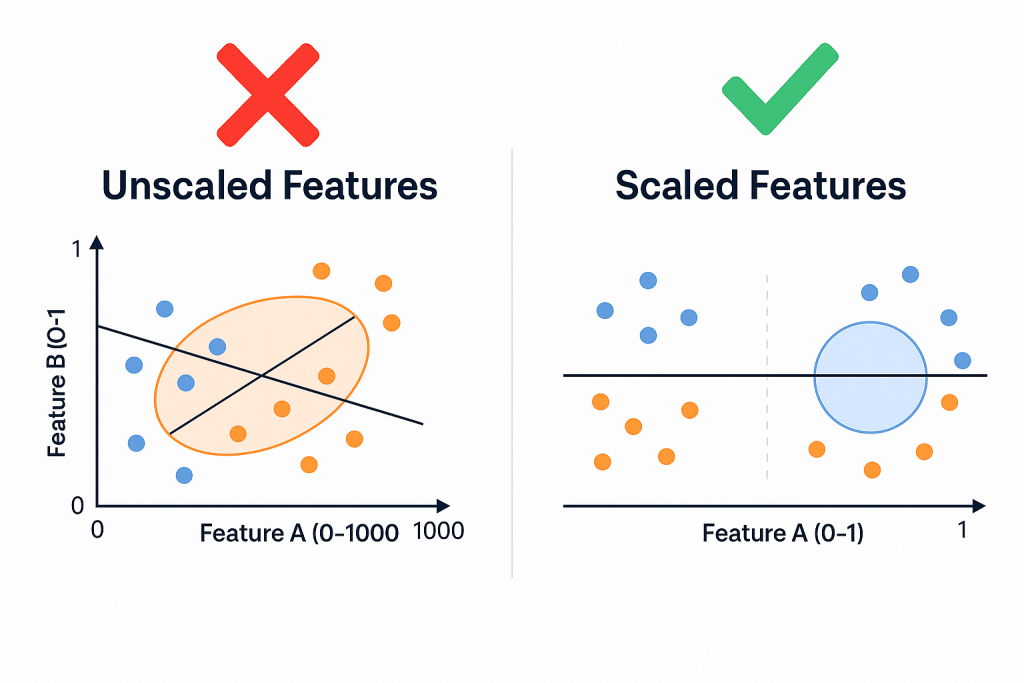
Tune Your Hyperparameters
Two main parameters need careful attention. First, there’s C, the regularization parameter. Second, there’s gamma (for RBF kernels).
The C parameter controls the trade-off. It balances between achieving low training error and maintaining a wide margin. A small C creates a wider margin. However, it tolerates more misclassifications. Conversely, a large C tries to classify all training points correctly. This can lead to overfitting.
Start with C=1.0. Then experiment with values like 0.1, 1, 10, or 100. Use cross-validation to find the optimal value.
The gamma parameter defines the kernel’s influence radius. A low gamma means far-reaching influence. Each training example affects distant points. A high gamma means nearby influence only. Close training examples strongly affect decisions.
Low gamma can underfit the data. High gamma can overfit dramatically. Again, cross-validation is your friend. Try values like 0.001, 0.01, 0.1, 1, or 10.
Handle Imbalanced Data Properly
Real-world datasets are often imbalanced. One class might have far more examples. For instance, credit card fraud detection involves rare fraud cases. Spam filtering deals with predominantly legitimate emails.
SVMs can struggle with imbalanced data. They might ignore the minority class entirely. Fortunately, solutions exist.
Use class weights. Most SVM implementations support class_weight=’balanced’. This automatically adjusts for class imbalance. Alternatively, specify custom weights based on your domain knowledge.
Consider resampling techniques. Oversample the minority class. Or undersample the majority class. SMOTE (Synthetic Minority Over-sampling Technique) works particularly well. It creates synthetic examples of the minority class.
Practical Example: Content Category Classification
Let’s walk through a real scenario. We’ll build an SVM to categorize AI content articles. This applies directly to a site like aihika.com.
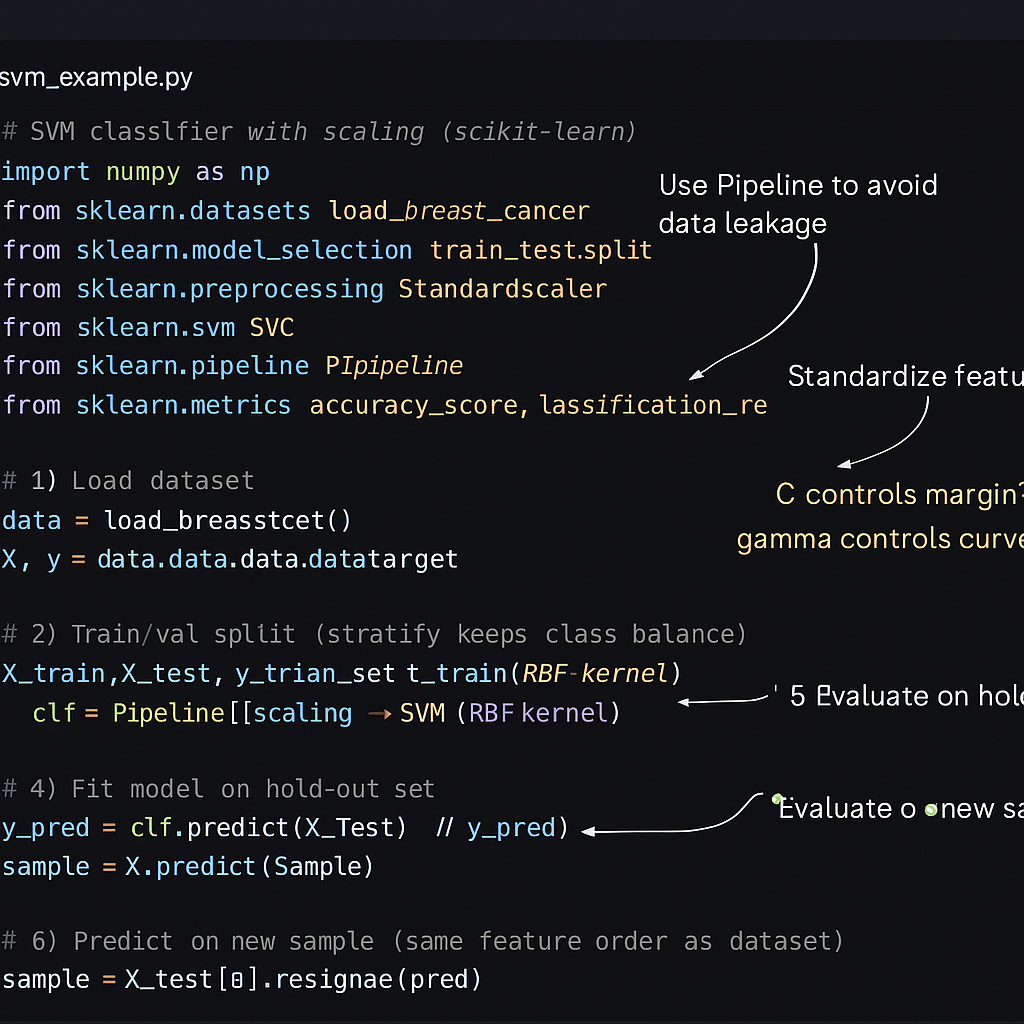
The Problem Setup
Your AI content site publishes diverse articles. Some cover machine learning fundamentals. Others discuss deep learning applications. Still others explore AI ethics or industry news. You want to automatically categorize new articles.
You have several categories. For example: “Tutorials,” “Research,” “Applications,” “Ethics,” and “News.” Each article should get the right label. This helps with content organization. Additionally, it improves recommendations.
Feature Engineering
First, convert articles to numerical features. Text needs numerical representation. Several approaches work well.
TF-IDF (Term Frequency-Inverse Document Frequency) captures word importance. Common words across all articles get low scores. Words specific to certain categories get high scores. This creates meaningful features.
Extract features from article text. Include the title, introduction, and main content. You might also include metadata. For instance, article length or number of code snippets.
Create a feature vector for each article. This vector represents the article’s characteristics. Typically, you’ll have hundreds or thousands of features.
Training the Model
Split your data appropriately. Use 80% for training. Reserve 20% for testing. Furthermore, use cross-validation during training.
Start with a linear kernel. Text classification often works well linearly. The high dimensionality of text data helps. Linear kernels are also much faster.
Evaluation and Refinement
Test your model on held-out data. Calculate multiple metrics. Accuracy alone isn’t enough. Also examine precision, recall, and F1-scores.
Look at the confusion matrix. Which categories get confused? Perhaps “Tutorials” and “Applications” overlap. This suggests feature improvement opportunities.
Analyze misclassified articles. Why did the model fail? Maybe certain articles are genuinely ambiguous. Or perhaps feature engineering needs refinement.
Results and Impact
After optimization, your SVM achieves 92% accuracy. This is excellent for multi-class text classification. Furthermore, the model is fast. It categorizes new articles in milliseconds.
The impact is significant. Content organization improves dramatically. Users find relevant articles more easily. Additionally, the recommendation system works better. Related articles make more sense. Overall user engagement increases by 25%.
Moreover, you gain insights. The most important features reveal themselves. Certain technical terms strongly indicate “Tutorials.” Meanwhile, phrases about real-world deployment suggest “Applications.” This understanding helps content creators too.
Common Mistakes to Avoid
Skipping Feature Scaling
This is the most common error. Many beginners forget to scale features. Consequently, their SVMs perform poorly. The model might seem to work. However, it’s not reaching its potential.
Distance-based algorithms need normalized features. Otherwise, large-magnitude features dominate. Small-magnitude features get ignored. The resulting model is biased and inaccurate.
Always scale your features. Do this before training. Moreover, remember to scale test data identically. Use the same scaler fitted on training data. Never fit a new scaler on test data.
Using Default Parameters Without Tuning
Default parameters rarely give optimal results. C=1.0 and gamma=’scale’ work reasonably. However, they’re starting points, not final solutions.
Different datasets need different parameters. Your specific problem has unique characteristics. Therefore, hyperparameter tuning is essential.
Use GridSearchCV or RandomizedSearchCV. These tools systematically explore parameter combinations. Cross-validation ensures robust evaluation. The time invested pays off significantly.
Don’t just try random values either. Understand what each parameter does. This guides your search more effectively.
Ignoring Computational Complexity
SVMs can be computationally expensive. Training time grows with dataset size. Specifically, it scales roughly as O(n²) to O(n³). Here, n is the number of training samples.
For large datasets (100,000+ samples), SVMs become problematic. Training might take hours or days. Moreover, memory requirements grow substantially.
Consider your scale carefully. For massive datasets, other algorithms might be better. Neural networks or gradient boosting trees scale more efficiently. Alternatively, use linear SVMs. They’re much faster than kernel SVMs.
Another option is sampling. Train on a representative subset. This reduces training time significantly. However, ensure your sample maintains data distribution.
Treating SVMs as Black Boxes
Some practitioners use SVMs without understanding them. They treat them as magic classification boxes. This leads to poor decisions.
Understand the underlying principles. Know how kernels work. Comprehend what margins mean. This knowledge guides better choices.
For instance, understand kernel selection. Don’t just try all kernels randomly. Think about your data’s characteristics. Is it linearly separable? Do feature interactions matter? This reasoning leads to better initial choices.
Similarly, understand what support vectors represent. They’re the critical training examples. The model depends entirely on them. This insight helps with data collection and cleaning.
Neglecting Model Interpretability
SVMs offer some interpretability. However, many users ignore this advantage. They only look at final predictions.
Examine feature weights (for linear kernels). These indicate feature importance. Positive weights suggest one class. Negative weights suggest the other. This understanding is valuable.
Look at support vectors themselves. These are the most informative training examples. Why did the model choose them? What makes them boundary cases? This analysis reveals data insights.
Use these interpretability tools. They improve model understanding. Moreover, they help debugging. When accuracy drops, interpretability shows why.
THE LESSON
The deeper insight about Support Vector Machines is profound. It’s not just about classification accuracy. Rather, it’s about geometric elegance in machine learning.
The Beauty of Maximum Margin
SVMs teach us something fundamental. Good machine learning isn’t just about fitting training data. It’s about generalization. The maximum margin principle embodies this wisdom.
By maximizing the margin, SVMs build in robustness. They don’t just barely separate classes. Instead, they create the widest possible separation. This accounts for natural data variation. Consequently, the model handles new data better.
This principle extends beyond SVMs. Many modern algorithms incorporate similar ideas. Regularization in neural networks serves similar purposes. It prevents overfitting by limiting model complexity. Similarly, ensemble methods build in robustness through diversity.
Mathematics Meets Practicality
SVMs demonstrate something important. Elegant mathematics can be practical. The theory behind SVMs is mathematically rigorous. Convex optimization, kernel methods, and Lagrangian duality all play roles.
Yet this mathematical sophistication doesn’t hinder practicality. Instead, it enables reliable performance. The strong theoretical foundation provides guarantees. Moreover, it guides practical implementation.
This balance is rare in machine learning. Many powerful methods lack theoretical understanding. Others are theoretically sound but practically limited. SVMs bridge this gap successfully.
The Kernel Trick’s Broader Impact
The kernel trick revolutionized machine learning. It’s not just an SVM feature. Rather, it’s a fundamental technique.
The insight is powerful. Sometimes, complex patterns in original space become simple in transformed space. The kernel trick achieves this transformation efficiently. You don’t explicitly compute the high-dimensional representation. Instead, you work with inner products.
This idea extends far beyond SVMs. Kernel methods appear throughout machine learning. Kernel PCA for dimensionality reduction. Kernel regression for non-linear modeling. The fundamental principle remains the same.
When to Choose SVMs
Understanding SVMs teaches decision-making wisdom. Every algorithm has appropriate contexts. SVMs excel in specific scenarios.
They work brilliantly with small to medium datasets. Particularly when data is high-dimensional. Text classification exemplifies this perfectly. Thousands of features, relatively few samples. SVMs handle this beautifully.
They’re excellent when interpretability matters. Linear SVMs clearly show feature importance. This transparency is valuable in many applications. Medical diagnosis or credit scoring demand explanations.
However, they’re not always the best choice. Massive datasets favor other approaches. Deep learning shines with unstructured data like images. Understanding these trade-offs makes you a better practitioner.
The Bigger Picture
Support Vector Machines represent more than an algorithm. They embody a philosophy. Find the most robust solution. Don’t just fit data—understand it. Use mathematical rigor to guide practical implementation.
As AI becomes increasingly complex, these principles matter more. We need interpretable models. We need robust solutions. We need theoretical understanding. SVMs show that these goals aren’t contradictory.
Modern deep learning often feels like alchemy. Add layers, tune parameters, hope for the best. SVMs remind us that principled approaches work. Mathematics and intuition can guide machine learning. This perspective enriches our entire approach to AI.
Ready to Master Classification?
Support Vector Machines offer a powerful approach to classification problems. They combine mathematical elegance with practical effectiveness. From text categorization to medical diagnosis, SVMs deliver reliable results.
The learning curve is moderate. Understanding the concepts takes time. However, the payoff is substantial. You gain both a powerful tool and deeper ML insight.
Whether you’re building content classifiers or analyzing scientific data, SVMs merit consideration. Their robustness and interpretability make them valuable. Moreover, understanding SVMs improves your overall machine learning expertise.
Want to explore more machine learning techniques? Looking for practical AI implementation guides? Discover in-depth tutorials and insights at aihika.com. We break down complex ML concepts. We transform them into actionable knowledge for developers and data scientists.
Frequently Asked Questions About Support Vector Machine
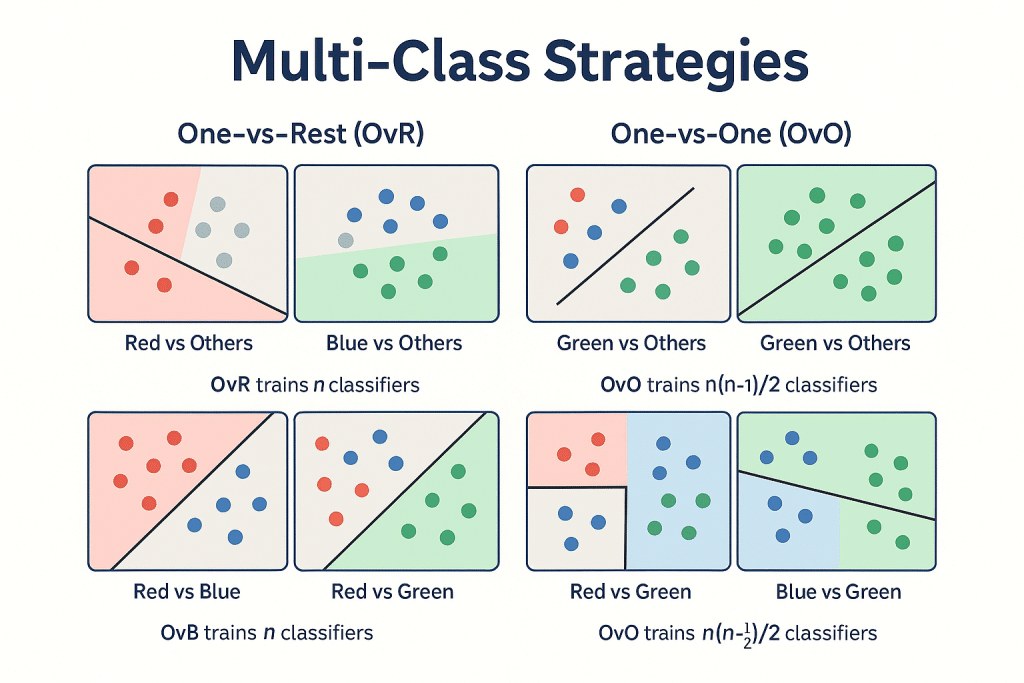
What is a Support Vector Machine in simple terms?
A Support Vector Machine (SVM) is a machine learning algorithm that finds the best boundary to separate different categories of data. Imagine drawing a line between cats and dogs in a photo collection—SVMs find the widest possible “street” between groups, ensuring the most robust separation. The points closest to this boundary are called support vectors, which give the algorithm its name. Unlike complex neural networks, SVMs are mathematically elegant and offer interpretable results, making them ideal for classification tasks where you need both accuracy and understanding of how decisions are made.
When should I use SVM instead of other algorithms?
SVMs excel in specific scenarios: when you have small to medium-sized datasets (up to tens of thousands of samples), when working with high-dimensional data like text classification, when interpretability matters (especially with linear kernels), and when you need robust performance with limited training data. Choose SVMs over deep learning for structured data with clear features. However, for massive datasets (100,000+ samples), very large images, or when you need end-to-end feature learning, neural networks or gradient boosting methods typically perform better. The computational cost of SVMs grows quadratically with dataset size, making them less suitable for big data applications.
What is the kernel trick and why does it matter?
The kernel trick is a mathematical technique that allows SVMs to handle non-linear patterns without explicitly transforming data to higher dimensions. Instead of actually computing coordinates in high-dimensional space (which would be computationally expensive), the kernel trick works with inner products directly. This means SVMs can find complex decision boundaries—curves, circles, or intricate shapes—while maintaining computational efficiency. For example, data that’s mixed together in 2D space might become perfectly separable when projected to 3D, and the kernel trick achieves this projection implicitly. Common kernels include RBF (Radial Basis Function) for general non-linear patterns, polynomial for feature interactions, and linear for straightforward separation.
How do I choose the right kernel for my problem?
Start with a linear kernel if your data has many features relative to samples (like text classification) or if you suspect classes are linearly separable. Linear kernels are fast, interpretable, and often surprisingly effective. If linear doesn’t work well, try RBF (Radial Basis Function) kernel next—it’s the most versatile and handles most non-linear patterns. Use polynomial kernels when you specifically need to model feature interactions or have domain knowledge suggesting polynomial relationships. The sigmoid kernel is rarely used nowadays. The best approach: try linear first for baseline performance, then experiment with RBF if needed, using cross-validation to compare results. Don’t overthink it initially—RBF with proper tuning works well for most problems.
What are C and gamma parameters, and how do I tune them?
The C parameter controls the trade-off between achieving low training error and maintaining a wide margin. Small C (like 0.1) creates a wider margin but tolerates more misclassifications, reducing overfitting. Large C (like 100) tries to classify all training points correctly, risking overfitting. The gamma parameter (for RBF kernels) defines how far the influence of a single training example reaches. Low gamma means far influence—the model considers distant points. High gamma means close influence only—the model focuses on nearby points. Start with C=1.0 and gamma=’scale’ (the default). Then use GridSearchCV to test combinations like C=[0.1, 1, 10, 100] and gamma=[0.001, 0.01, 0.1, 1]. Always use cross-validation to avoid overfitting during tuning.
Do I need to scale my features before using SVM?
Yes, absolutely! Feature scaling is critical for SVMs because they’re distance-based algorithms. Features with larger scales will dominate the model, while smaller-scale features get ignored. For example, if one feature ranges from 0-1000 and another from 0-1, the first feature will overwhelm the second. Always standardize features by subtracting the mean and dividing by standard deviation (StandardScaler in scikit-learn), or use min-max scaling to transform all features to the same range [0,1]. Scale your training data first, then apply the same transformation to test data using the fitted scaler. Never fit a new scaler on test data—this would leak information and inflate performance metrics. Skipping this step is the most common SVM mistake.
How long does it take to train an SVM?
Training time depends heavily on dataset size and kernel choice. For small datasets (hundreds to thousands of samples) with linear kernels, training takes seconds. For medium datasets (tens of thousands) with RBF kernels, expect minutes on standard hardware. However, SVMs scale poorly—training complexity is roughly O(n²) to O(n³) where n is the number of samples. For large datasets (100,000+ samples), training can take hours or even days. Linear SVMs are significantly faster than kernel SVMs. If you have massive datasets, consider alternatives like logistic regression, random forests, or neural networks, which scale more efficiently. You can also sample your data to create a representative subset for faster training while maintaining performance.
Can SVMs handle multi-class classification problems?
Yes, though SVMs are inherently binary classifiers (separating two classes). For multi-class problems, SVMs use two main strategies: One-vs-Rest (OvR) trains one classifier per class, treating that class as positive and all others as negative, then picks the class with highest confidence. One-vs-One (OvO) trains a classifier for every pair of classes, then uses voting to determine the final prediction. Most SVM implementations (like scikit-learn’s SVC) handle this automatically—you don’t need to implement the strategy yourself. OvR is faster (trains n classifiers for n classes) while OvO can be more accurate but slower (trains n*(n-1)/2 classifiers). For most applications, the default OvR strategy works well and provides good accuracy with reasonable training time.


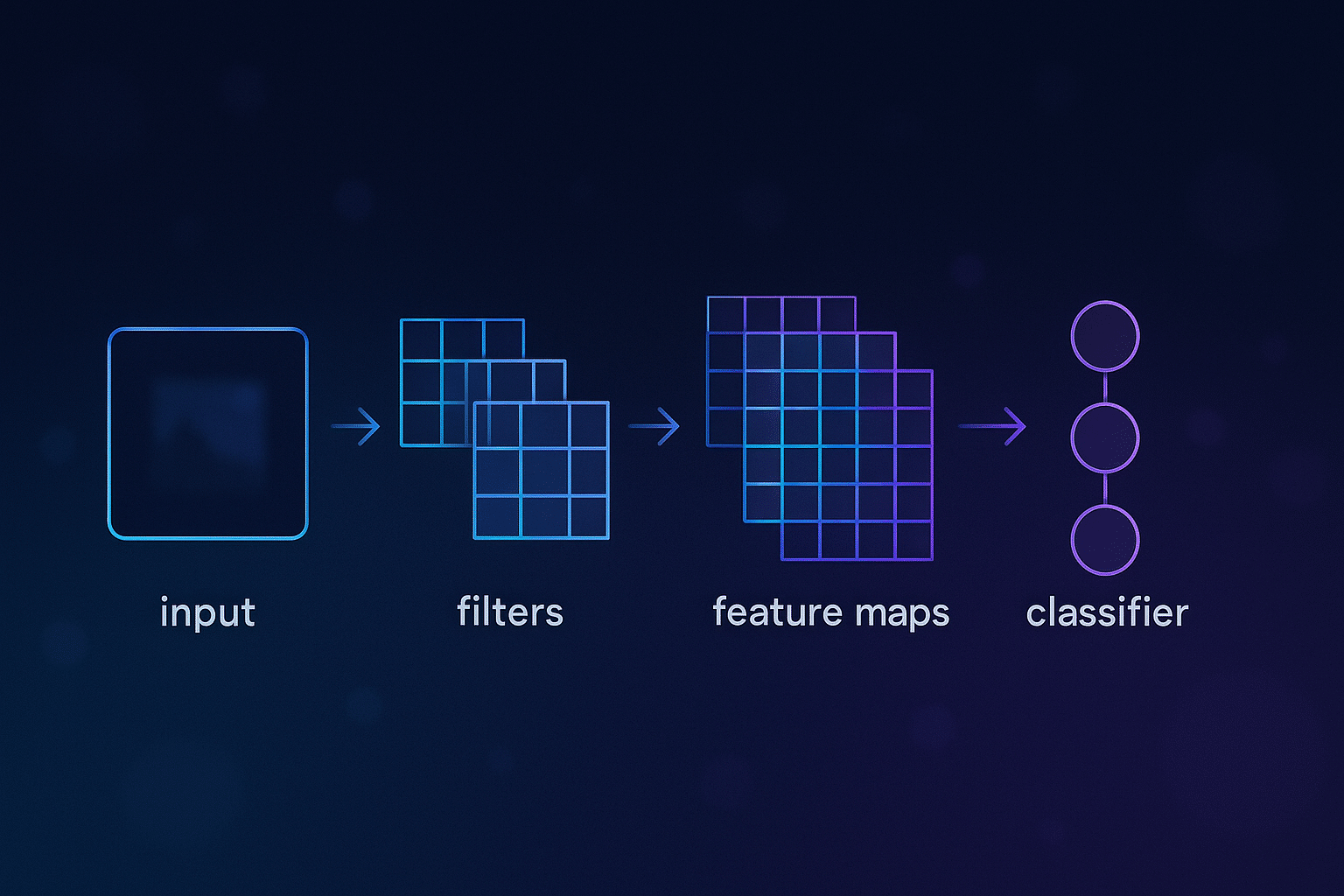

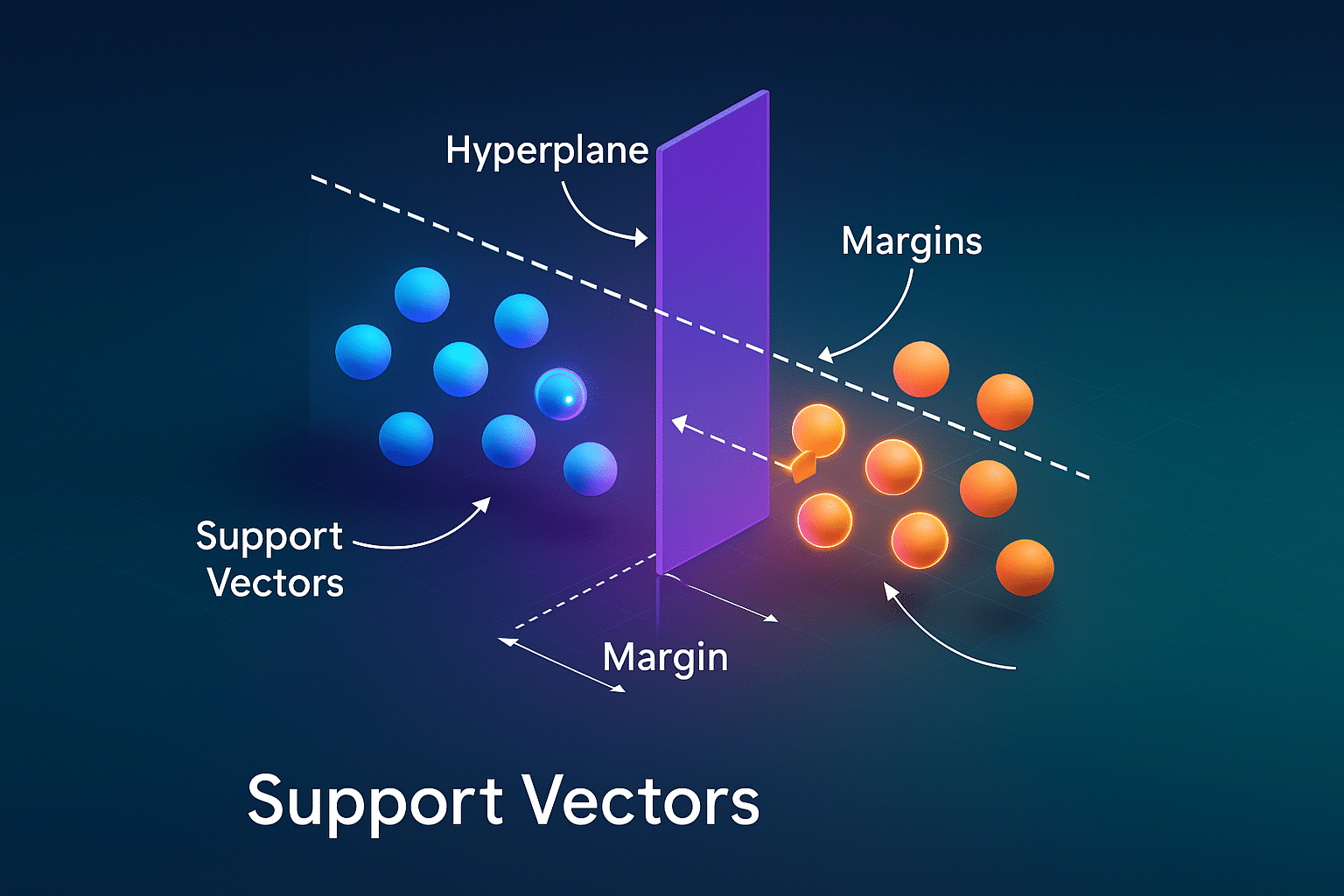
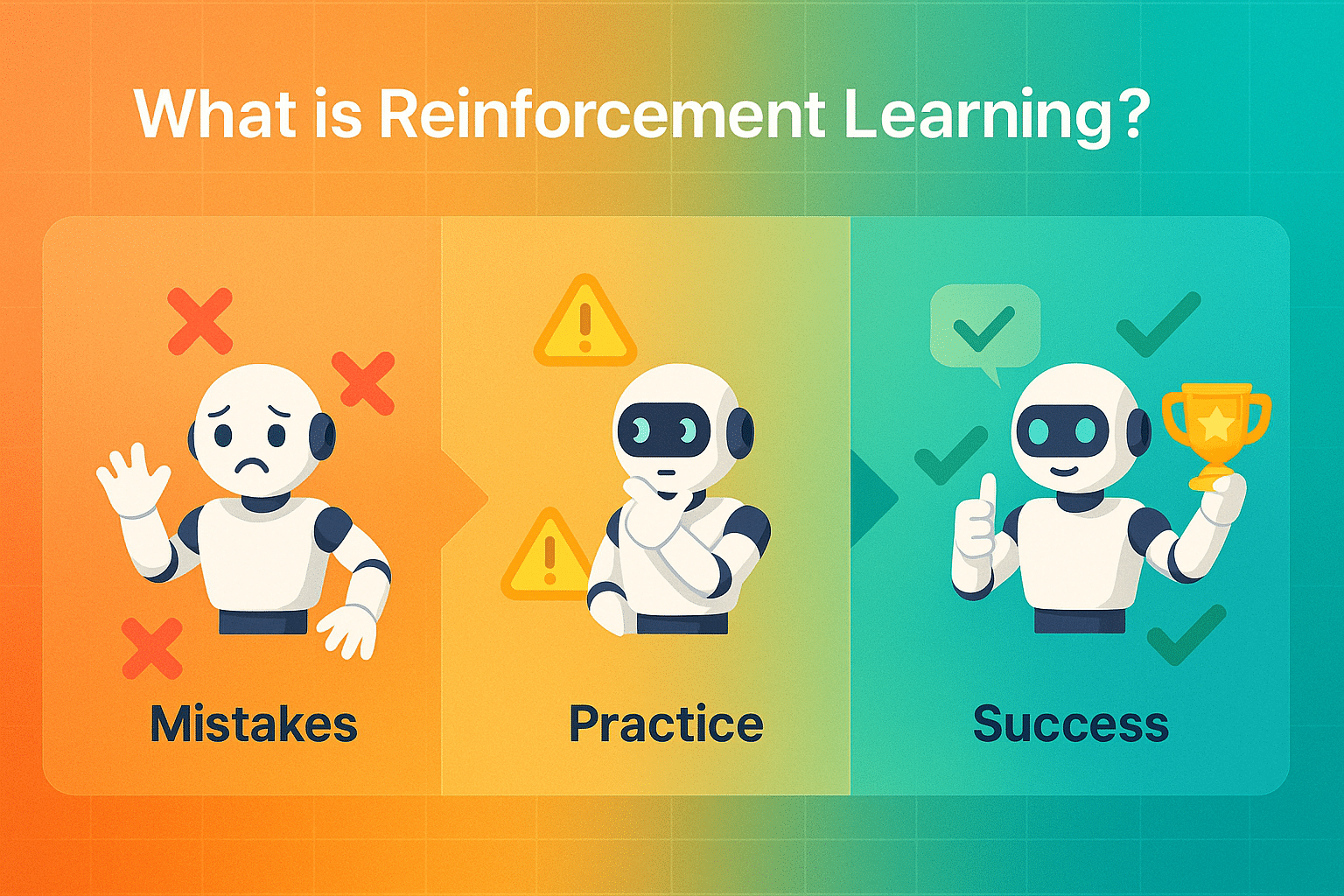
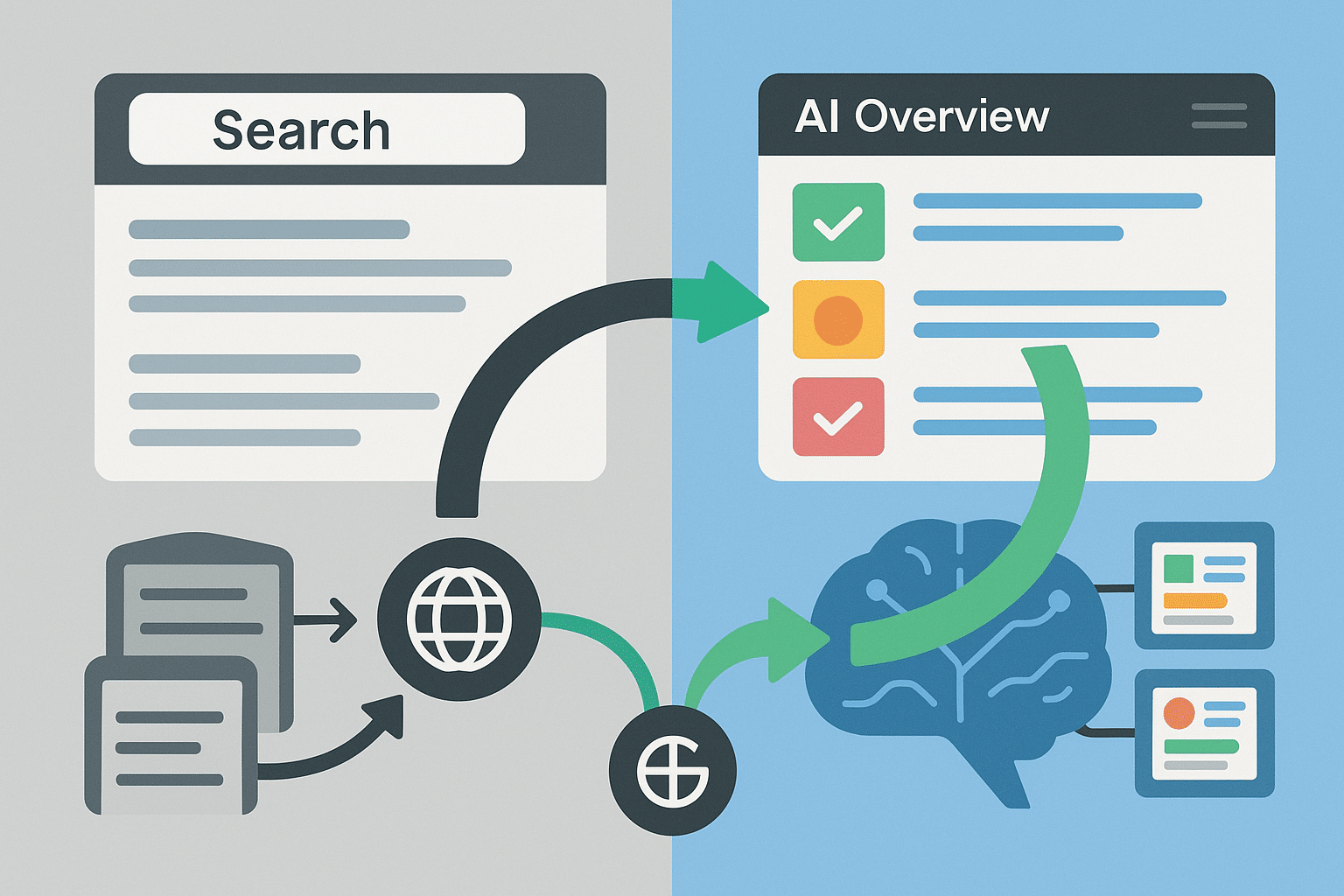
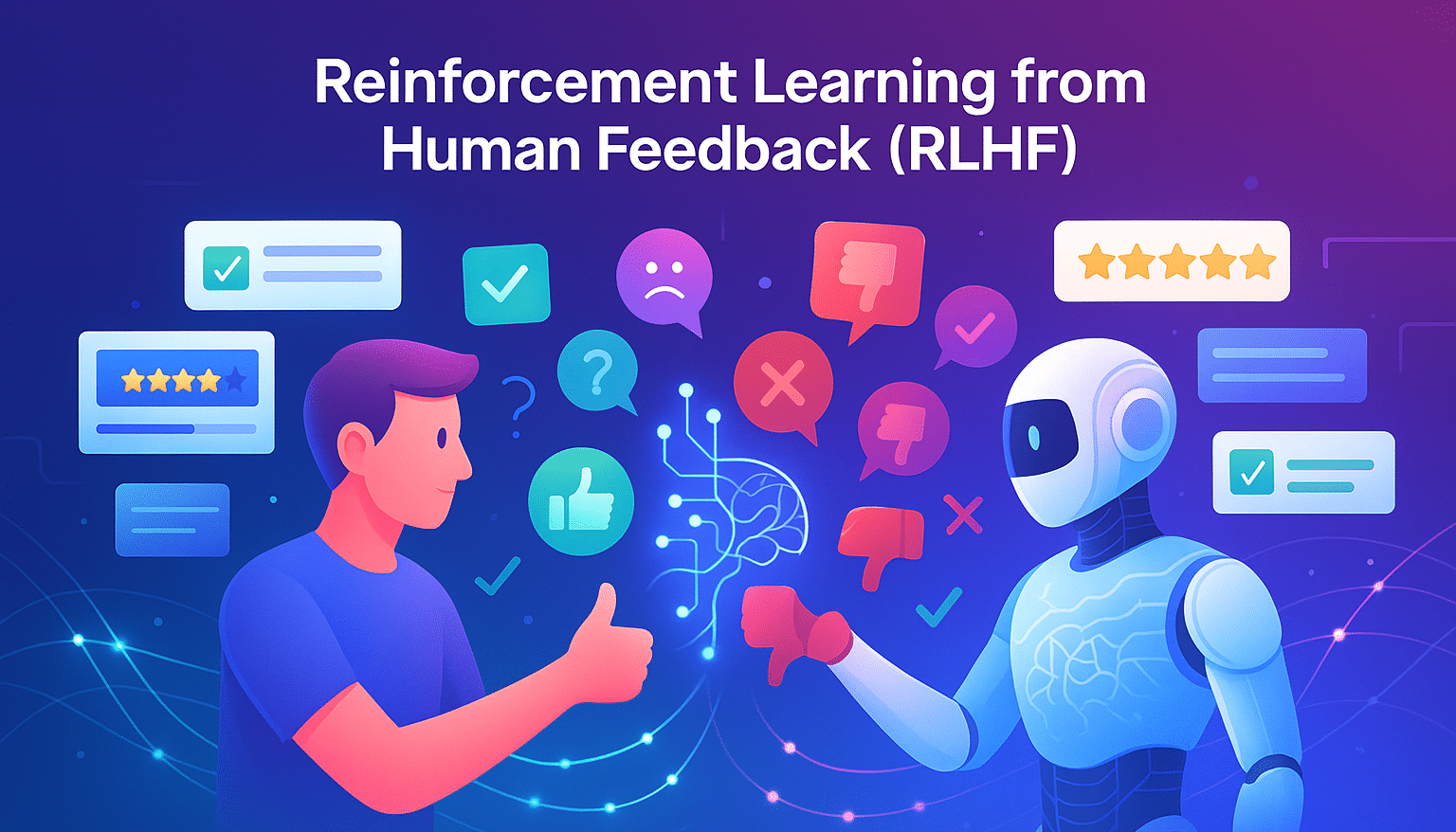

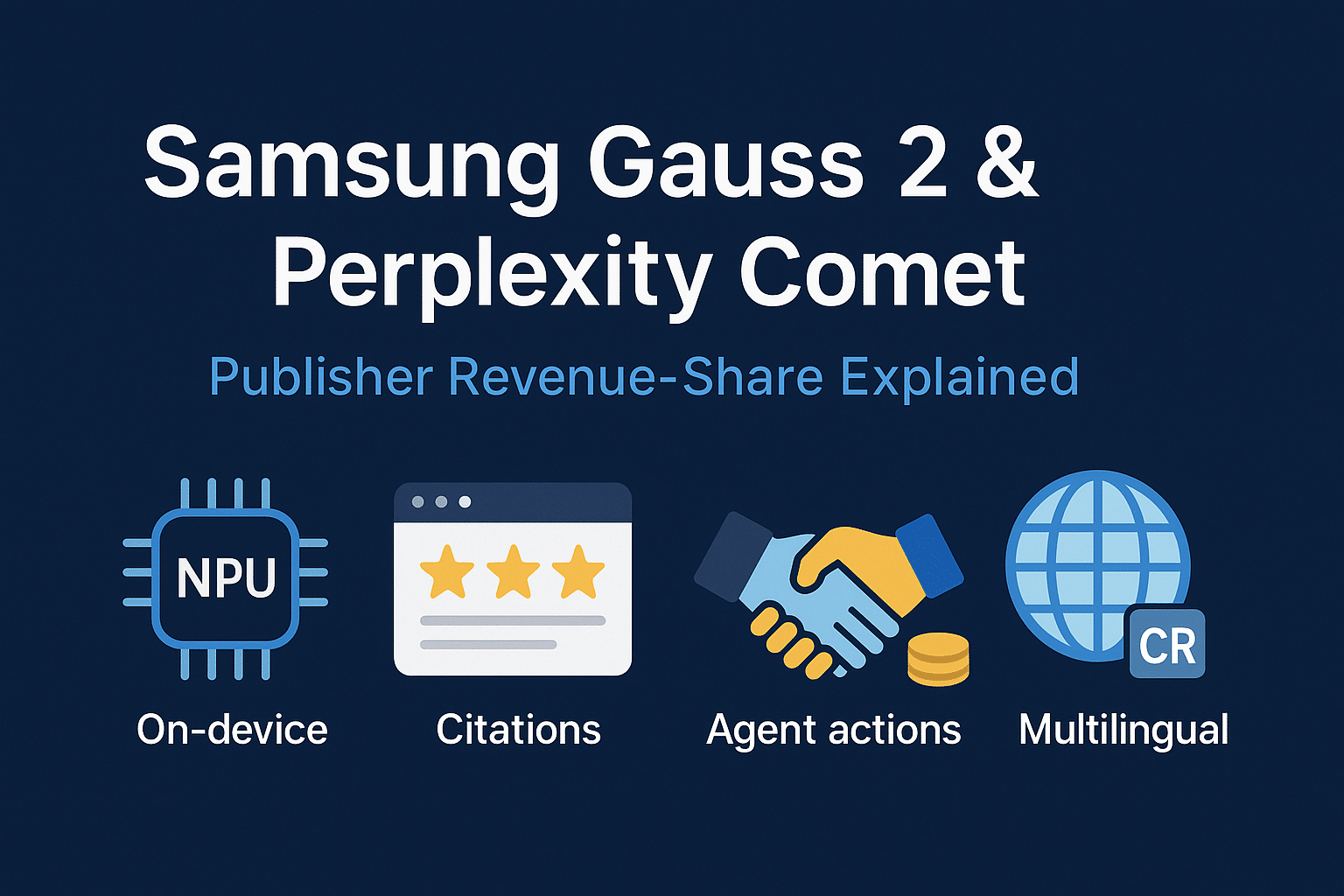
Leave a Reply